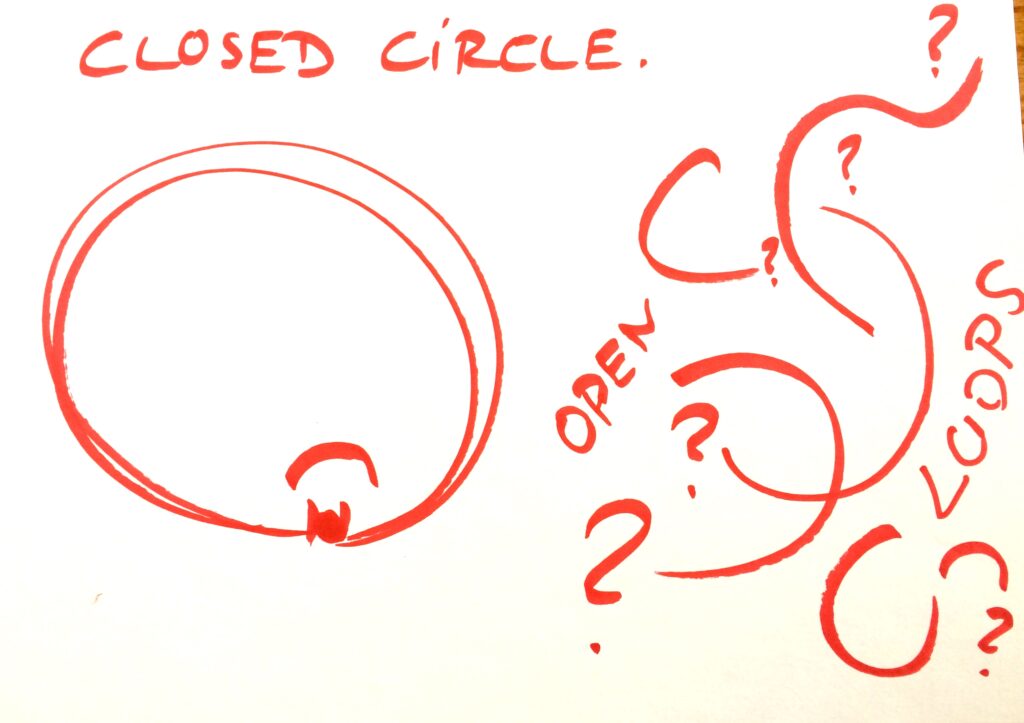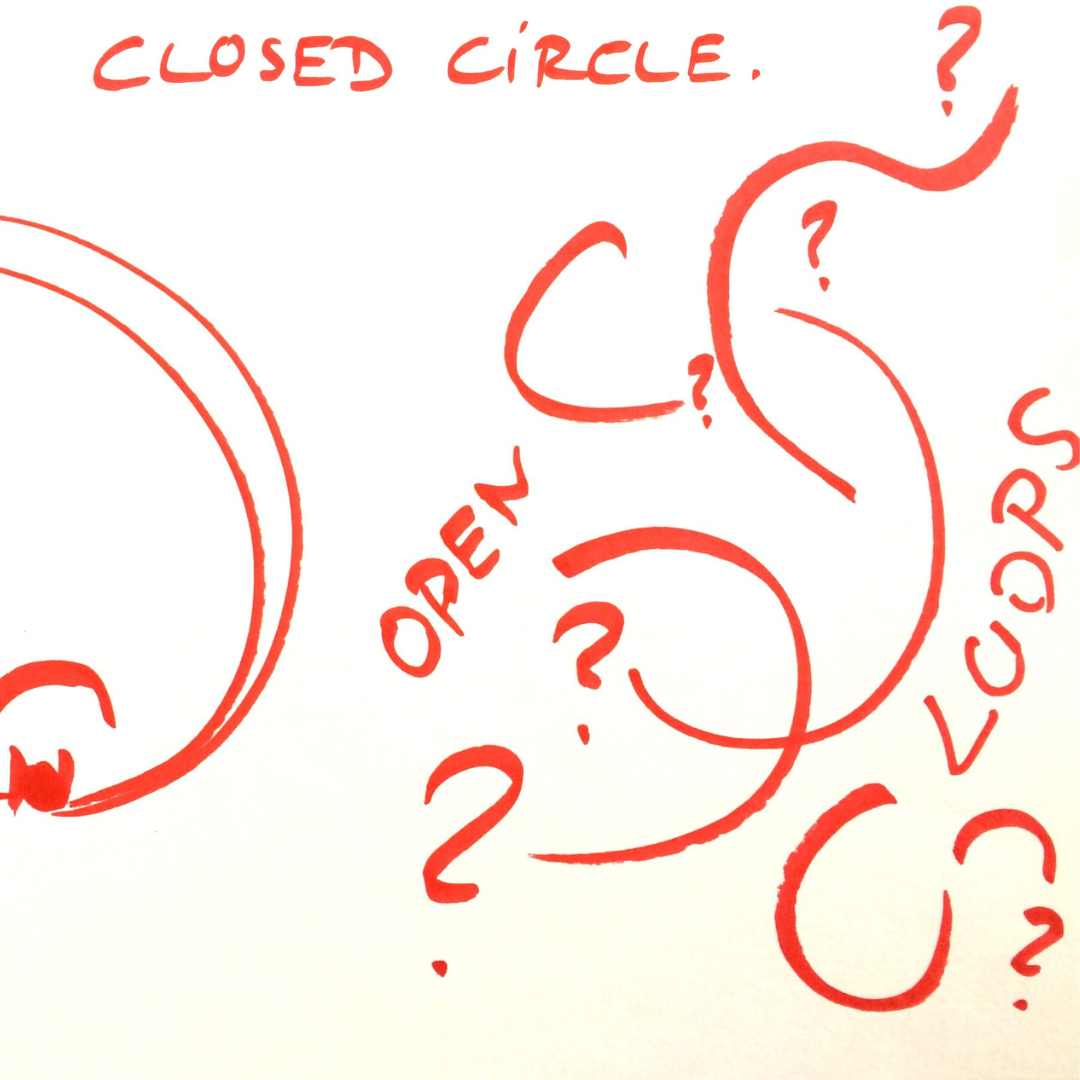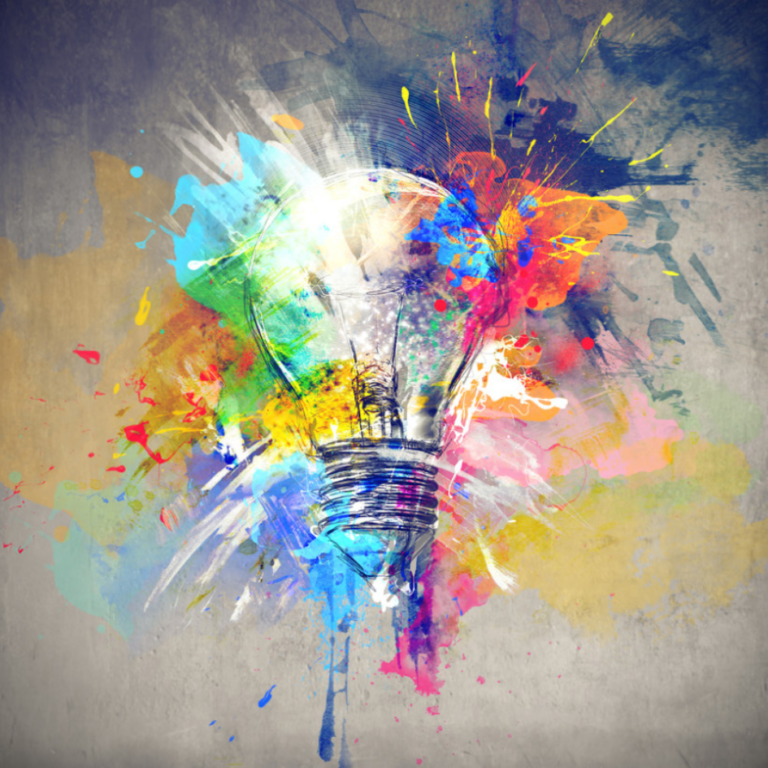During this article, I’d like to invite you to into the benefits and pitfalls of
open loops and closed circles.
The picture above illustrates, visually, what happens energetically.

| Here are some examples of open loops: A part of the house has been started to be renovated, but is not yet completed. For instance, you have laid a new floor, but the foot strips at the edges are not there yet. The last finishing touch is missing! You have sent a report to someone for revision or reply, but have not heard back yet. You linger in expectation -also called “texpectation”. -) You have started work with several people involved, different opinions are in the pot on a new vision and no decision has been taken yet. Your phone is not on Flight Mode or Off, but on as you work- constantly, Apps come in with Blings, Pings or Plongs- that ask for attention and reply. Do you get the idea? All of these examples are open loops. A process that has started but has not been completed. Our lives are full of them! The effect of these open loops on the nervous system is constant triggering, new information, wondering, restlessness -but no resolution. You look each day at the non-existing foot strips and may think : Gosh, when? It can cause a lot of stress to live with this constant pull that does not end on a finish… But open loops also have a positive side: if we take the allegory of music, for instance. Let’s refer to the music of Richard Wagner: The Ride of the Valkyries …one bombastic harmony leaping into the next expanding the expectation constantly: .listen here! You are taken on a ride…and the satisfaction of the all-embracing final closing key is suspended and suspended and suspended… Longing for the final chord, the landing on the keynote to have a satisfying closure. -) Why do open loops also feel good? It’s dynamic. It’s unpredictable. You can ride in the excitement of the possibilities, and enjoy the thrill of having many balls up in the air. It can be an opportunity to “hold the void” – be patient and alert at the same time. Now let’s take the closed circles: An action with a clear beginning, a middle, and an end. Here are some examples: You prepare a meal. The process of cutting, cooking, eating, and even doing the dishes is a closed circle. You fix the tire of a bike. Finding the hole, and fixing it. You write a birthday card to a dear friend. You dance a tango for one tanda. You give a yoga class. You take a yoga class. Why do closed circles feel good? The sense of completion gives a restful feeling. Satisfaction. Your nervous system gets the message: Relax, there is no more surveying modus needed, the navigating and stirring actions are done. Mission accomplished. Result delivered. Outcome clear. Peace. |
| Let’s go back to the example of the music: The reassuring and predictable sound of a classical Major chord and the landing on the key-note: Safe and harmonic …closed circle. Or: the Wagnerianian type of suspension and widening the scope … stormy, expansive, dynamic… open loop. Here is a Tip for your daily life: Be curious to become aware of the open-loop and closed-circle actions during your day. Imagine your day as a symphony or song: What does the composition of your day feel like? Notice if there are many open loops or many closed circles. Some people are addicted to live constantly in open-loop mode: which means that their Nervous System is then in constant Sympathetic Overdrive. Survival mode. Some people have very little window of tolerance to open loop mode: Their Nervous system is much happier in Parasympathetic Mode: closed-circle actions feel more safe and reassuring. Here comes the conclusion: Play with balancing them! At times rough and unpredictable, hanging in suspension and uncertainty And – at times, harmonic and safe. Especially, if it’s not your favorite state! Wishing you a dynamic and harmonious ride into the next month. |







0 responses on "The joy of completion: open loops versus closed circles"